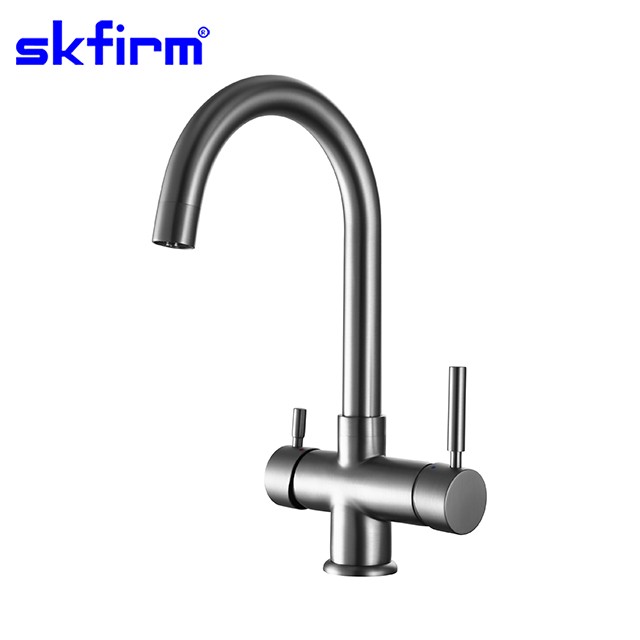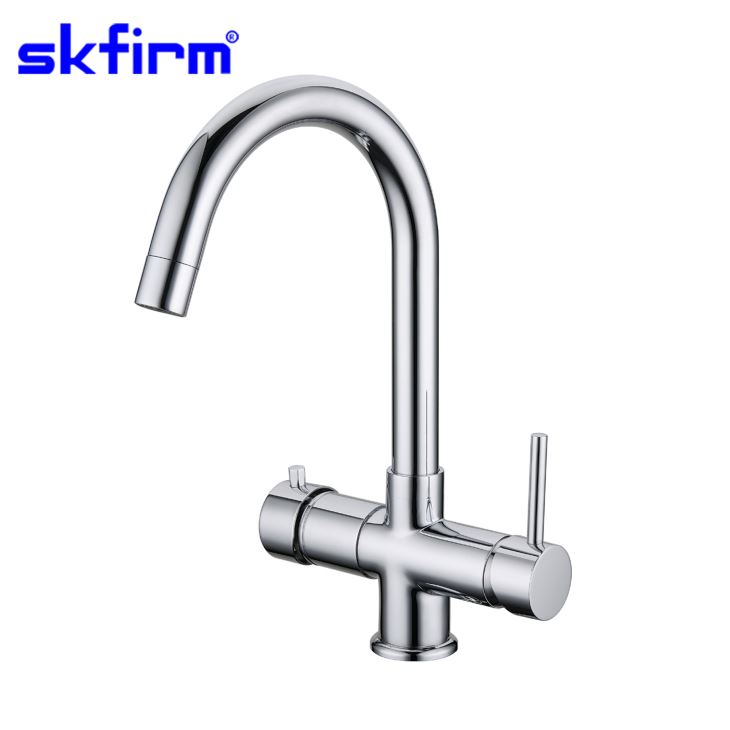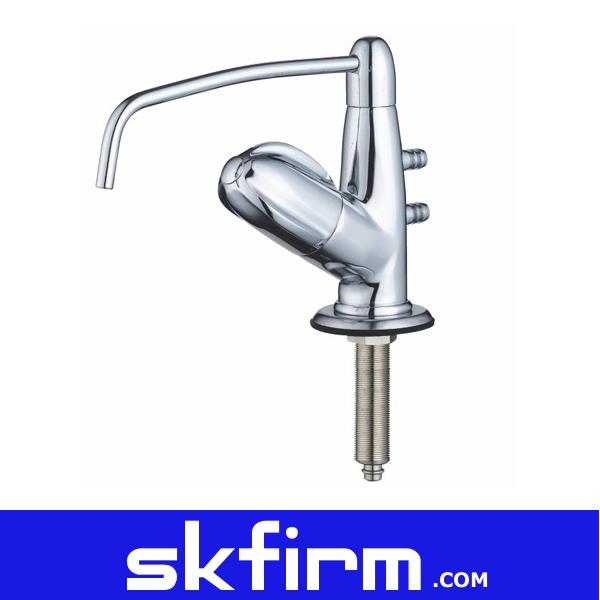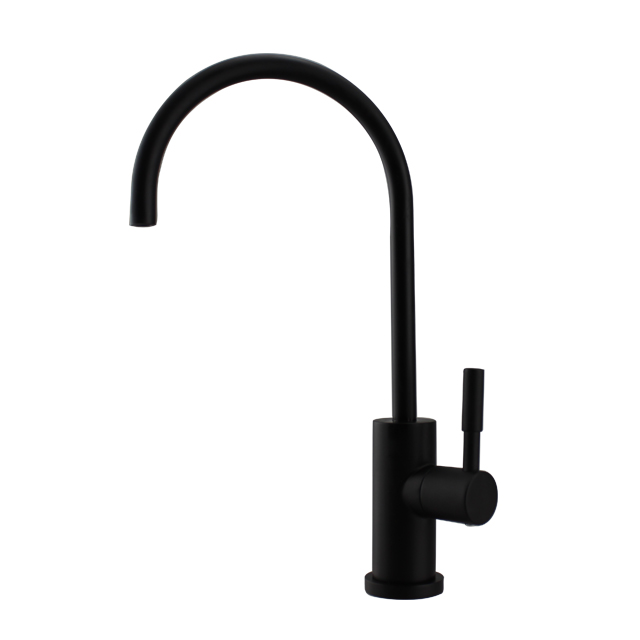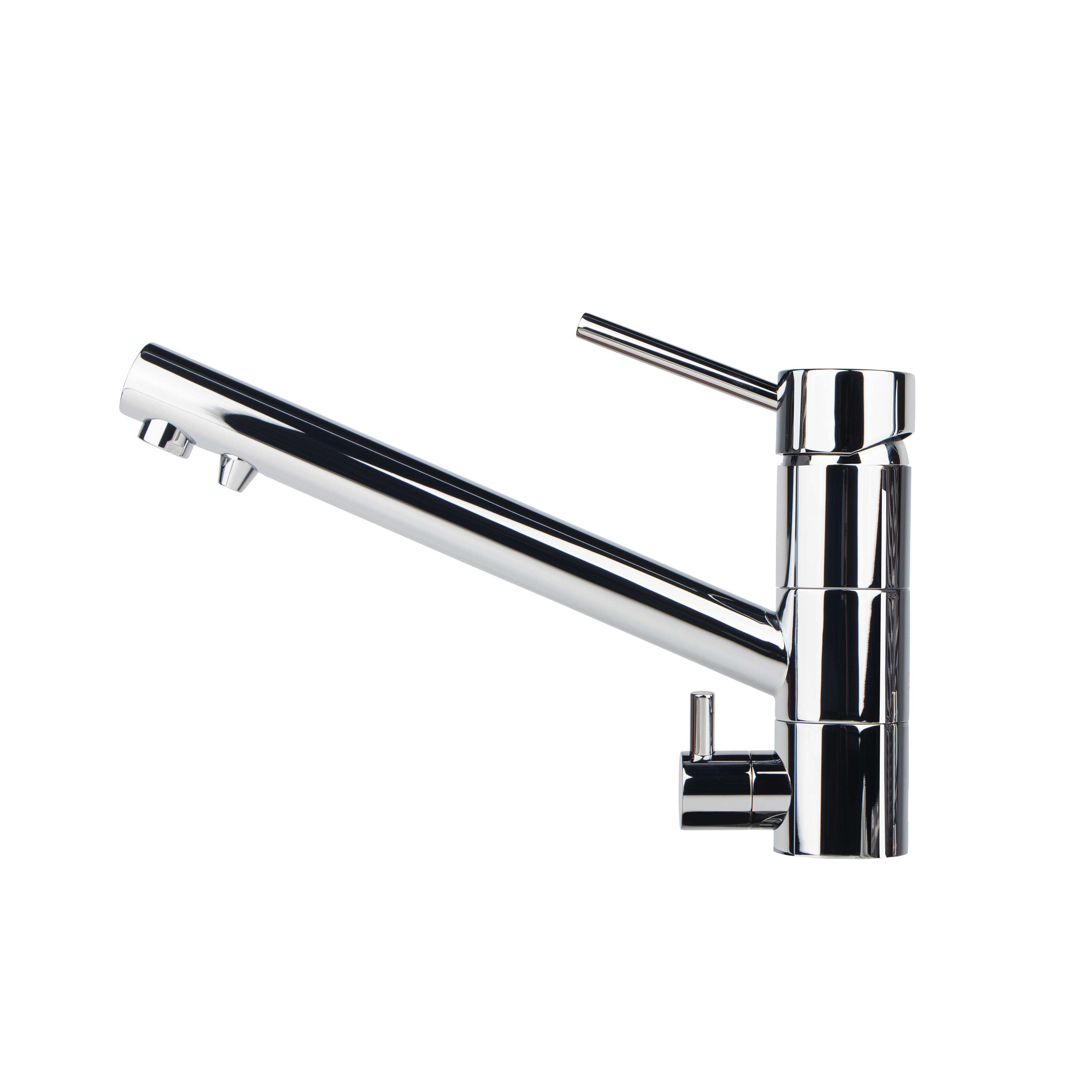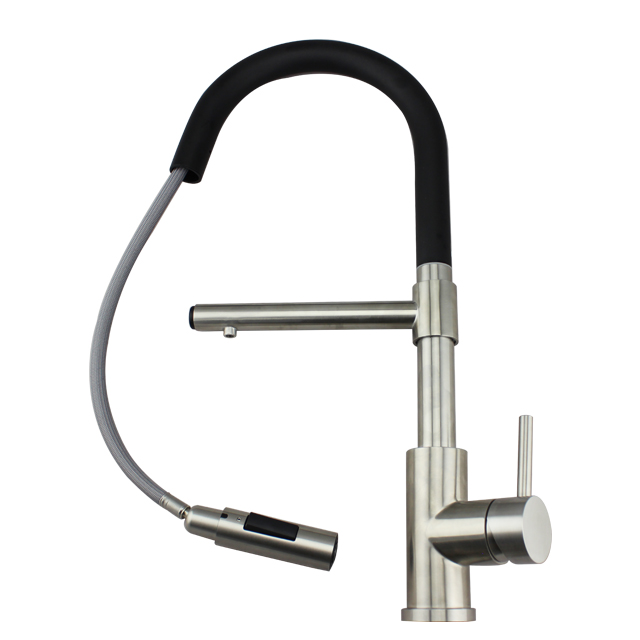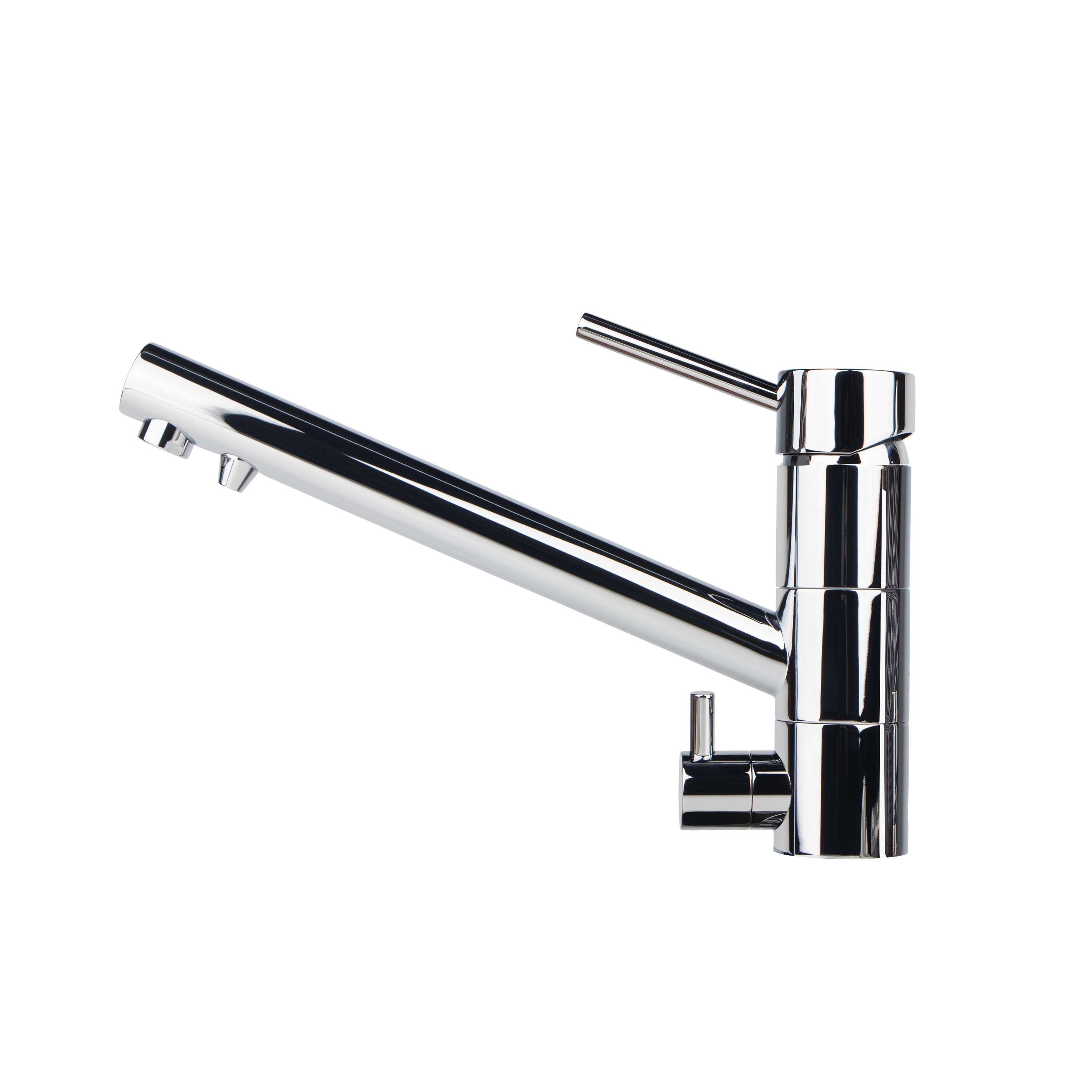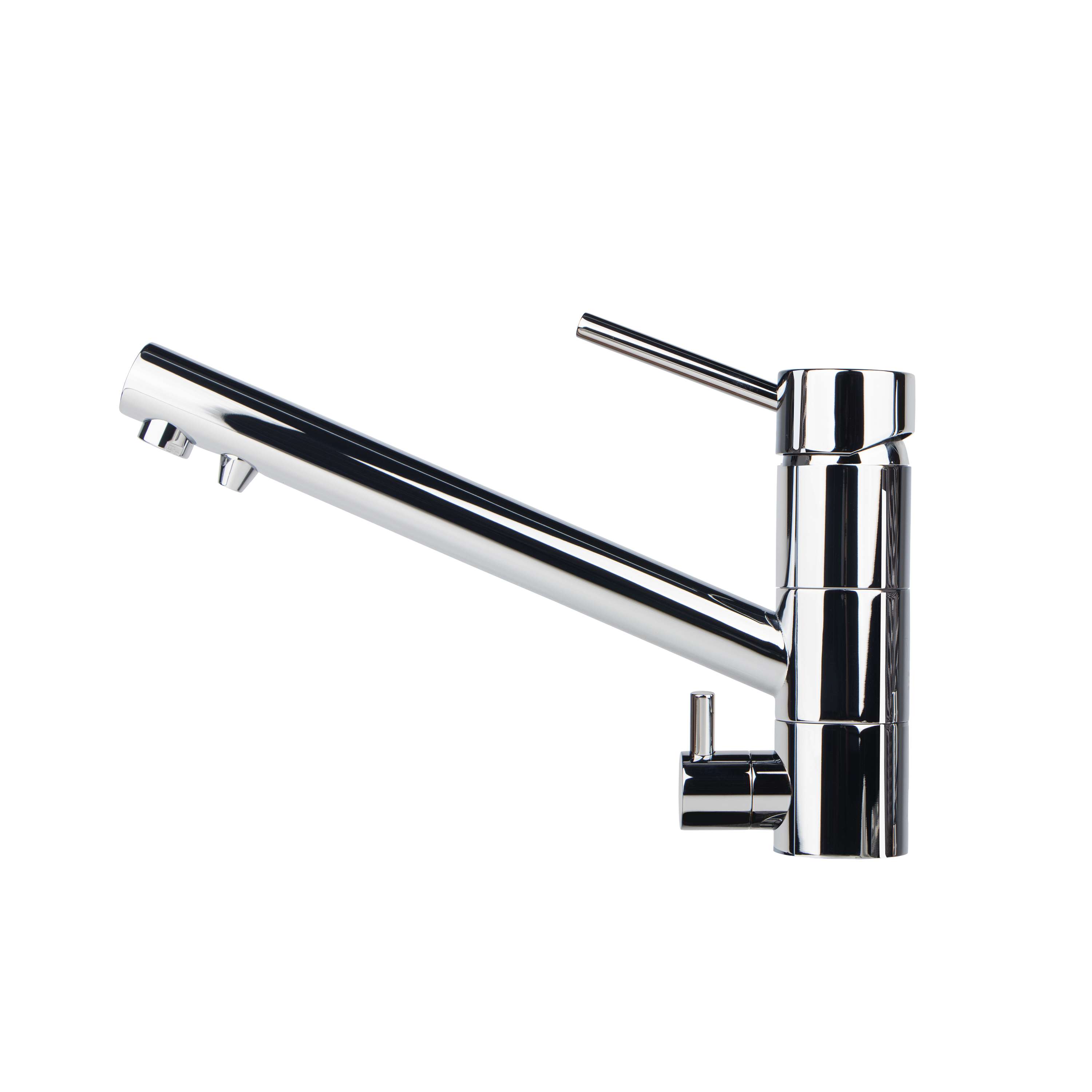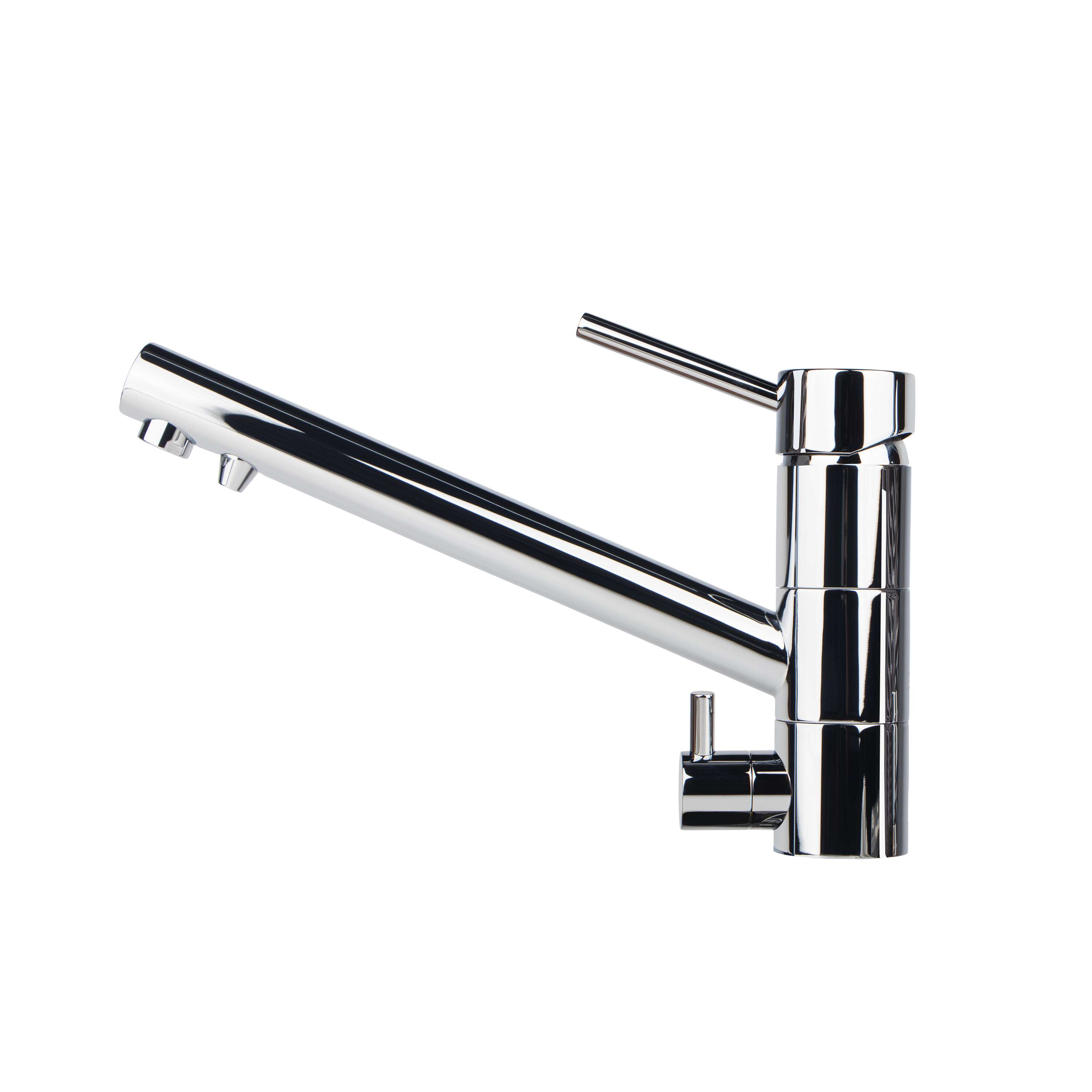What is an Ionizer Faucet?
An ionizer faucet is a type of water filtration system that incorporates the process of water ionization. Ionization is the process of adding or removing charged particles, called ions, from water to improve its quality. Specifically, an ionizer faucet is designed to filter water while also altering its pH levels by introducing negative ions (anions) and positive ions (cations) to the water molecules.
The resulting “ionized” water is believed to have several health benefits, including antioxidant properties, improved hydration, and better taste. These faucets are equipped with advanced filtration systems, often incorporating elements like activated carbon, mineral stones, or ceramic filters, to purify the water before it undergoes ionization. Many models also include an automatic or manual pH setting, allowing users to adjust the acidity or alkalinity of the water.
The Science Behind Ionization
Water ionization is primarily based on the concept of electrolysis, a process that uses an electric current to split water molecules into their constituent ions. Water (H₂O) consists of hydrogen and oxygen atoms, which can be separated through electrolysis into hydroxide ions (OH-) and hydrogen ions (H+). When the water is exposed to an electric field within the ionizer, the negatively charged hydroxide ions migrate to the positive electrode, while the positively charged hydrogen ions move to the negative electrode.
This process creates two types of water:
- Alkaline Water (Negative Ions): The water near the negative electrode becomes rich in hydroxide ions, making it more alkaline. Alkaline water is believed to neutralize excess acidity in the body and offer antioxidant properties.
- Acidic Water (Positive Ions): The water near the positive electrode becomes rich in hydrogen ions, making it acidic. Although acidic water is not usually consumed, it has many uses for cleaning, skin care, and disinfecting purposes.
By adjusting the settings on an ionizer faucet, users can control the pH levels of the water, making it either more acidic or more alkaline based on their specific needs.

The Components of an Ionizer Faucet
The functionality of an ionizer faucet relies on several key components, which work together to purify and ionize the water. These include:
- Pre-Filtration System: Most ionizer faucets are equipped with a multi-stage filtration system that removes impurities, chemicals, chlorine, and heavy metals from the water. This filtration process ensures that the water is clean and free of contaminants before it undergoes ionization.
- Electrolysis Chamber: The heart of the device is the electrolysis chamber, where water is subjected to an electric current to split its molecules into acidic and alkaline components. This chamber typically contains electrodes made of materials such as platinum or titanium to facilitate the process.
- Control Panel: Many modern models come with a control panel that allows users to adjust the pH levels of the water. Some units also offer preset modes for various applications, such as drinking, cooking, or skin care.
- Mineral Stones: Some devices use mineral stones (often found in the filtration system) to enhance the ionization process. These stones release beneficial minerals like calcium, magnesium, and potassium into the water, improving its quality and taste.
- Post-Filtration System: After ionization, the water often passes through a secondary filtration system to remove any remaining impurities and improve the taste. This ensures that the water is pure, clean, and safe to drink.
The Process of Ionization in an Ionizer Faucet
The process of ionization in an ionizer faucet typically involves several stages, from initial filtration to final pH adjustment:
- Water Entry: The tap water enters the faucet and is directed into the filtration system. This stage removes large particles, chlorine, and other contaminants that may be present in the water.
- Filtration and Purification: As the water passes through the filter, smaller impurities, such as heavy metals, pesticides, and microorganisms, are removed. Some systems also use activated carbon to remove chlorine and organic compounds, further purifying the water.
- Electrolysis: The purified water is then passed through the electrolysis chamber, where it is exposed to an electric current. The electric field splits the water molecules into two types of ions—alkaline (negative ions) and acidic (positive ions)—creating ionized water.
- pH Adjustment: Depending on the user’s preferences, the faucet may allow for pH adjustment. The pH scale ranges from 0 to 14, with 7 being neutral. Alkaline water has a pH higher than 7, while acidic water has a pH lower than 7. Many ionizer faucets offer adjustable pH levels, allowing users to choose the optimal water type for different uses.
- Final Filtration: After ionization, the water may pass through a final post-filtration stage to remove any residual impurities and ensure that it tastes clean and refreshing.
- Dispensing: Finally, the ionized water is dispensed through the faucet, ready for consumption, cooking, or other uses.
Health Benefits of Ionized Water
The popularity of ionizer faucets has been fueled by claims that ionized water offers numerous health benefits. Although the scientific community is still exploring the full extent of these benefits, many users report positive effects from drinking alkaline ionized water. Here are some of the key health benefits associated with ionized water:
- Antioxidant Properties: Alkaline water is rich in negative ions (hydroxide ions), which are believed to act as antioxidants. Antioxidants neutralize free radicals in the body, which are unstable molecules that can damage cells and contribute to aging and various diseases.
- Improved Hydration: Ionized water has smaller molecular clusters, which may allow it to be absorbed more quickly by the body. Some users report feeling better hydrated when drinking ionized water compared to regular tap water.
- Acid-Base Balance: Ionized alkaline water is thought to help neutralize excess acidity in the body, which may improve overall health. Some proponents claim that maintaining a balanced pH in the body can help prevent chronic diseases and improve energy levels.
- Better Taste: Ionized water often tastes smoother and more refreshing than regular tap water. The filtration process removes chlorine and other impurities, which can leave a bitter or unpleasant taste in regular water.
- Digestive Health: Alkaline water may help improve digestion by neutralizing stomach acid and reducing symptoms of acid reflux or heartburn.
- Skin Health: The antioxidant properties of alkaline water are also thought to benefit the skin. Some people use acidic ionized water for facial cleansing, as it may help balance the skin’s pH and improve its appearance.
Why Choose an Ionizer Faucet?
With the growing awareness of water quality and its impact on health, an ionizer faucet has become an attractive option for many households. Here are some reasons to consider adding it to your home:
- Convenience: An ionizer faucet provides a continuous supply of ionized water directly from your tap. This is more convenient than purchasing bottled ionized water or installing a separate water ionization system.
- Cost-Effective: Over time, using one can save money compared to buying bottled alkaline or ionized water. While the initial investment may be higher, the long-term benefits often outweigh the cost.
- Environmental Impact: By using it, you reduce the need for plastic water bottles, which contribute to environmental pollution. This faucet is a sustainable alternative for obtaining high-quality water.
- Customization: Many ionizer faucets allow users to adjust the pH levels of their water based on personal preferences or specific needs, whether it’s for drinking, cooking, or skin care.
- Health and Wellness: The potential health benefits of ionized water make this faucet an attractive addition for those looking to improve hydration, skin health, and overall well-being.
Conclusion
An ionizer faucet is a powerful tool that transforms ordinary tap water into a more healthful and refreshing liquid. By using electrolysis to create alkaline or acidic water, it offers a range of benefits, including improved hydration, better taste, and antioxidant properties. Whether you are looking to enhance your water quality for drinking, cooking, or skincare, this device provides a convenient, cost-effective, and eco-friendly solution. As more people recognize the importance of water quality, it is poised to become an essential fixture in homes and businesses worldwide.


